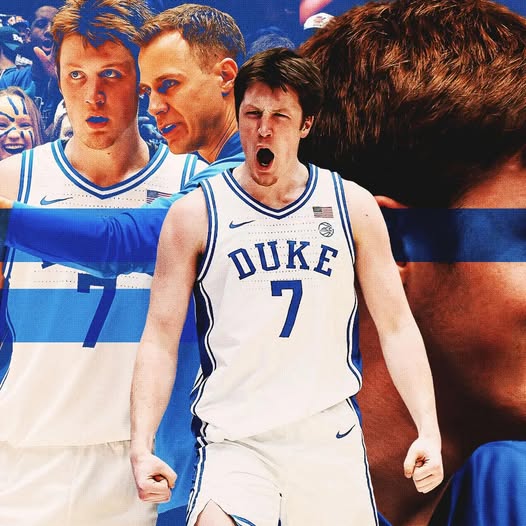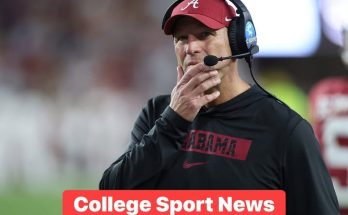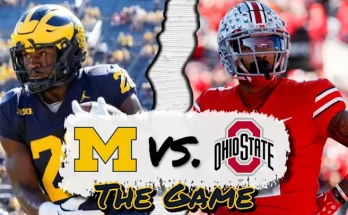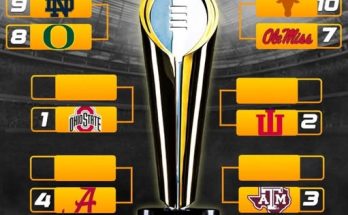Many Duke fans have been waiting for the first chess piece to move on the offseason board for Duke. In the days following the end of the 2024–25 college basketball season, that sentiment has grown into a kind of anxious anticipation. The Blue Devils, fresh off another deep NCAA Tournament run, now find themselves at a pivotal juncture. A crossroads where talent, tradition, and transition intersect. And as each day passes without a concrete update, fans grow increasingly curious—restless even—about what’s next for Jon Scheyer’s program.
This isn’t just about one player’s decision. It’s about momentum. For Duke, the offseason is never just downtime. It’s a battlefield. A recruiting war zone. A strategic think tank. Every choice made—or not made—can ripple across the college basketball landscape. And so, as the dust settles from the chaos of March Madness, the Blue Devil faithful are watching the board with laser focus, waiting for that first, unmistakable move.
This particular offseason carries an extra layer of intrigue. The program sits at an inflection point, no longer in the earliest stages of the post-Coach K era, but also not yet cemented in its new form. Jon Scheyer has already proven that he can bring in elite talent. Cooper Flagg, the No. 1 player in the country, chose Duke. That alone is a monumental recruiting victory. And yet, building a true contender goes beyond one name, no matter how transcendent. Duke’s fanbase knows that. That’s why they wait—not just for news, but for a sign that the future is being molded with intention.
In recent weeks, there have been hints, murmurs, and near-moves. But nothing official. Players with eligibility remaining have yet to confirm their plans. A few NBA Draft declarations have been expected but delayed. The transfer portal is brimming with opportunity, but Duke has not yet struck. All of it feeds into the broader atmosphere of tension. This isn’t panic—it’s poise under pressure. But it’s also a collective breath being held, waiting for something, anything, to happen.
The speculation has been nonstop. Will Tyrese Proctor return? Is Jared McCain off to the draft? Can Duke snag a top-tier transfer big man? Will Sean Stewart emerge as a future star or seek opportunity elsewhere? And perhaps most importantly: how do all of these moving parts fit around Cooper Flagg? That’s the new reality in Durham—Flagg is the anchor, the gravitational center, the building block around which all else will be arranged. His decision to reject astronomical NIL offers and commit to Duke was the kind of foundational move that programs dream of. But even a king on the chess board needs support to survive the game.
In a normal offseason, the announcements would trickle out by now. The “I’m declaring for the draft” graphics. The “I’m running it back” posts. The cryptic tweets from insiders. The transfer rumors. Duke’s current silence isn’t without precedent, but it’s certainly not the norm in the social media age. For fans who spend their days refreshing timelines and parsing emoji-laced Instagram stories, this limbo is excruciating.
Yet within that silence lies strategy. Scheyer and his staff are known for playing the long game. They don’t rush. They don’t panic. They gather information, test the waters, read the room. And then they strike. Just look at how they landed Flagg—by building trust over time, by crafting a vision that extended beyond hype, by convincing him that Duke was more than a brand. It was a platform, a family, a legacy.
That same approach is being applied now, just behind the scenes. Conversations are being had. Feedback is being gathered. Plans are being drawn up. The coaching staff is balancing returning players with incoming freshmen, portal prospects with professional aspirations. It’s a jigsaw puzzle, and the first piece must be laid with precision. That’s what the fans are waiting for—not just a move, but the right move.
Consider the possibilities. If Proctor returns, Duke has a veteran floor general with pro-ready instincts and a growing sense of command. If McCain stays, they have a fearless scorer who thrives in big moments. If Caleb Foster takes a leap, or Flagg plays more on the ball, the backcourt suddenly becomes a nightmare for opposing defenses. But if any of them leave, that opens space for new talent—either from the portal or from within.
The frontcourt is even murkier. Kyle Filipowski’s departure for the NBA feels inevitable, but it hasn’t been formally announced. Ryan Young is gone. Christian Reeves remains a mystery. And so, a major need looms: Duke must secure a rim protector, a rebounder, a physical presence to complement Flagg’s perimeter versatility. That’s where the transfer portal becomes vital.
Names like Clifford Omoruyi, Oumar Ballo, and even stretch-fives like Tre Mitchell have been tossed around by fans and analysts alike. But as of today, Duke has not officially made a splash. Again: the move hasn’t come. The portal is wide open, but the Blue Devils are still waiting for the first domino to fall.
That first domino could even be a re-commitment. There’s growing belief that someone like Mark Mitchell might return, despite previous whispers to the contrary. If he does, that’s a huge coup for Scheyer—a versatile defender with experience, toughness, and positional flexibility. But it’s all hypothetical until someone makes it official. And until then, fans are left to wonder: what exactly is the plan?
Of course, there’s also the recruiting angle. Duke’s 2024 class is already elite—Flagg, Isaiah Evans, Kon Knueppel, Patrick Ngongba II, and Darren Harris form one of the best hauls in the country. But are they ready to lead immediately? Will Flagg be asked to do everything, or will veterans shoulder the load early on? And if Duke is looking to add a late-cycle piece, like a reclassified player or a post-grad transfer, the timing becomes even more delicate. Too soon, and you risk misfiring. Too late, and the board might be empty.
All of this makes the lack of movement even more pronounced. Duke fans aren’t unfamiliar with transition—they’ve lived through one of the most monumental coaching changes in sports history. But this offseason feels unique. The stakes are higher. The margin for error is thinner. And the expectations—well, they’re sky-high. That’s what happens when you bring in the best player in the country and pair him with a blue-blood brand.
The fanbase, to its credit, remains hopeful. Duke Twitter is buzzing with theories and lineups. Message boards dissect every rumor with forensic detail. Instagram stories from players are treated like tea leaves. This is not apathy—it’s investment. It’s passion. It’s a community ready to rally, but needing a signal first. They’re not asking for the whole playbook. Just the first move.
Maybe that move is Flagg putting out a hype video. Maybe it’s Filipowski posting a goodbye message. Maybe it’s Scheyer teasing a commitment. It could be subtle. It could be seismic. But whatever it is, it will send a message—not just to fans, but to the rest of the country: Duke isn’t waiting for the future. They’re building it now.
This waiting game, as exhausting as it is, also has its virtues. It reminds everyone just how much this program matters. Duke is one of the few schools in the nation where an offseason update can dominate national headlines. Where a recruit’s commitment or a return announcement feels like breaking news. Where silence isn’t indifference—it’s the calm before the storm.
And when the storm comes, it will come fast. One move will lead to another. A commitment here, a draft announcement there. The dominoes will fall. The picture will come into focus. The board will no longer be empty, but full of pieces in motion. And fans will no longer be asking “when?” They’ll be asking “what’s next?”
For now, though, it’s the waiting. The refreshing. The guessing. The hoping. Duke fans have been here before. They know the rhythms. They trust the process. But that doesn’t make the wait any easier. Because in Durham, expectations aren’t seasonal—they’re eternal. And with Cooper Flagg headlining a new chapter, the anticipation is even greater than usual.
The first move will come. It always does. And when it does, it won’t just be a chess piece sliding across the board. It will be a declaration. A vision. A signal that Duke is ready—not just to compete, but to dominate. Not just to play the game, but to master it.
Until then, the board remains still. But everyone’s eyes are on it. Because they know: when Duke moves, the game changes.



